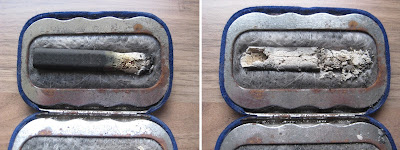The proof of the pudding, they say, is in the eating, but what about the proof of the pi?
The ancient Egyptians, the Babylonians, Archimedes and blogger Bob Brague will tell you that we need pi (π) for circle geometry, and that it is roughly 3.14159. Blogger Yorkshire Pudding will also tell you that we need pie, lots of it, but he would be referring to the kind he makes from minced meat topped with mashed potato and baked. Yorkshire Pudding is right. There is no need for mathematical constants and strange symbols. We only need to know that the distance around the circle of a shepherds pie, as near as dammit, is three and one-seventh (22/7) times the distance across. You can use this to ensure you are baking enough for everyone.
I took for granted what they said about pi at school, without any real understanding. If understanding is the ability to think of the same thing in different ways, and to be able to switch between them, this is my attempt to do that.
So, this is another mathematical post, like the one in January about the Pythagoras theorem. I wondered whether the same technique could be used to illustrate similar concepts; such as pi.
Here is a circle of 14 units across, zoomed in on the top right-hand quarter to make it easier to see and count. The quarter-circle is 7 units high, and it takes 11 units to go around its edge. So to go all the way round the full circle would take 44 units, which is three and one-seventh times the distance across the whole circle (14 x 22/7 = 44).
Does it also work for area? Can it show that the area of a circle is three and one seventh times the area of a square fitted from the centre to the edge (American: Area = πr2)?
Here is the circle again, with a square drawn from the centre to the edge, zoomed in on one quarter.
If the square is divided into a 7 by 7 grid of 49 smaller squares, then most of the smaller squares are inside the circle, but some are outside. Of those outside, some are complete squares while others are part-squares. Counting them, I reckon that a total equivalent of around 10½ smaller squared are outside the circle, leaving 38½ inside. I have tried to show how I counted 10½ by putting numbers on the quarter-circle. Those with the same numbers make up one square.
Multiplying this by 4, it would need 154 (38½ x 4) of the smaller squares to completely fill the full circle. This is equal to three and one-seventh times the 49 in the square on the radius (49 x 22/7 = 154).
To prove this visually, I used three larger squares to cover three-quarters of the circle. Then I moved the parts that were outside the circle (shown in grey) into the fourth quarter. So far, in all, this has used 3 larger squares, a total of 147 smaller squares.
But it does not quite cover all the fourth quarter of the circle. We need an extra 7 smaller squares (shown in yellow), in other words, one-seventh of a larger square.
So, the area of a circle is equal to three and one-seventh times that of a square drawn from the centre to the edge. (Area = πr2)
Arithmetically, it takes 38½ smaller squares to fill the fourth quarter, but there are only 3 x 10½, or 31½, available to move. We are 7 short.
I get it. At least I think I do.














